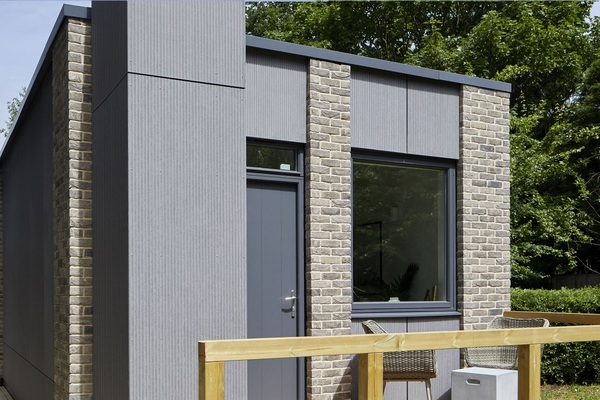You are viewing 1 of your 1 free articles
 Jules Birch
Jules BirchBuilding homes fit for tomorrow: the lessons from Parker Morris
Amid debate about ‘micro-homes’, Jules Birch, with the help of BBC Radio 4, looks back to the Parker Morris standards and the idea that homes should be designed with the future in mind
Listening to a new BBC Radio 4 documentary about Parker Morris and space standards, it is impossible not to feel a mix of nostalgia for an era of housing optimism and sadness that our ambitions have shrunk so much since.
As John Grindrod relates in Living Room, the title of the 1961 report was an indication that it was about much more than just a technical exercise in allocating space per person.
Work on Homes for today and tomorrow started 60 years ago this year, but it was building on a 20th century council housing tradition that began 100 years ago and it was also looking to the future to ensure that homes were fit for it.
“The programme is well worth a listen for a flavour of the report and the man behind it and also for the contemporary debate about space standards”
“A good house or flat can never be made out of premises which are too small,” said the report, which set out a much greater ambition for new homes.
“An increasing proportion of people are coming to expect their home to do more than just fulfil the basic requirement. It must be something of which they can be proud and in which they can express the fullness of their lives.”
Parker Morris standards became compulsory for all new homes built by councils and new towns and influenced those built by others but they were abolished by the Conservatives in 1980.
The programme is well worth a listen for a flavour of the report and the man behind it (he was also the man behind the Churchill Gardens Estate in Westminster) and also for the contemporary debate about space standards.
We hear about the rise of micro-flats that are significantly smaller than current (non-mandatory) standards.
‘Homes’ as small as 13-25 sq m are widespread in offices converted to residential under permitted development and are about as far from expressing the fullness of your life as you can get.
We also hear from Pocket Living, which builds compact flats (within the space standards) that it says are designed thinking like boat builders. “We are challenging contemporary notions of how people live,” chief executive Marc Vlessing has said.
That goes back to bigger questions about who and what new homes are for, but these were raised in the original Parker Morris report, too.
It was one reason the report shied away from recommending the enforcement of its standards on the private sector and a ban on smaller private homes: “Because they offer one way of meeting the needs of small families, we do not suggest that measures should be taken to stop the building of very small houses of this kind; but of course, for reasons of neighbourhood balance, not too many of them should be built in any one place.”
Nostalgia aside, the programme is a plea for a return to the optimism of the original report and to develop homes that are designed with the future in mind.
My one quibble was the bit at the beginning that repeated the familiar claims that new homes in Britain are the smallest in western Europe and that they have been getting smaller since World War II.
Familiar – but wrong. Comparisons need to take account of factors such the data sources, the changing mix of property types and the fact that new homes are being compared with older ones that may have been extended since they were first built.
A report for last year’s English Housing Survey investigated the issues and found that while some types of new home were getting smaller at various times in the 1980s and 1990s, those built more recently have got bigger (although some of this may reflect a change in the mix built).
“Parker Morris was making the opposite case: that homes are more than just units on a development plan”
However, there may be reasons we still think that homes are shrinking: room sizes have got smaller since 1980 as more en suite bathrooms and utility rooms are included; and plot sizes (ie gardens) have also got smaller over time.
Smallest in western Europe? The report says that the mean floor area of a new home in the UK is comparable with those in France and Germany on both a per dwelling and per person basis – although all three are much smaller than spacious new homes in the US.
All of which should to my mind reinforce the focus on conversions, not just those unleashed by permitted development but also those of existing houses into micro-flats to maximise housing benefit.
In a sense, of course, these ‘homes’ represent the market meeting demand and a recent report by a right-wing thinktank calls for more of them, not less. In another they are a stark illustration of the lack of an alternative.
Parker Morris was making the opposite case: that homes are more than just units on a development plan and building homes fit for today and tomorrow has to be about more than just the bottom line.
Maybe the 20th century still has a few pointers for the 21st.
Jules Birch, award-winning blogger











